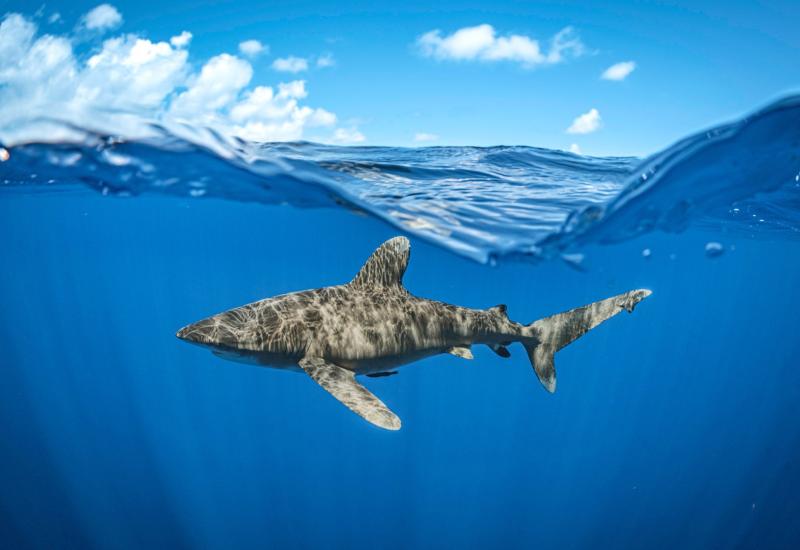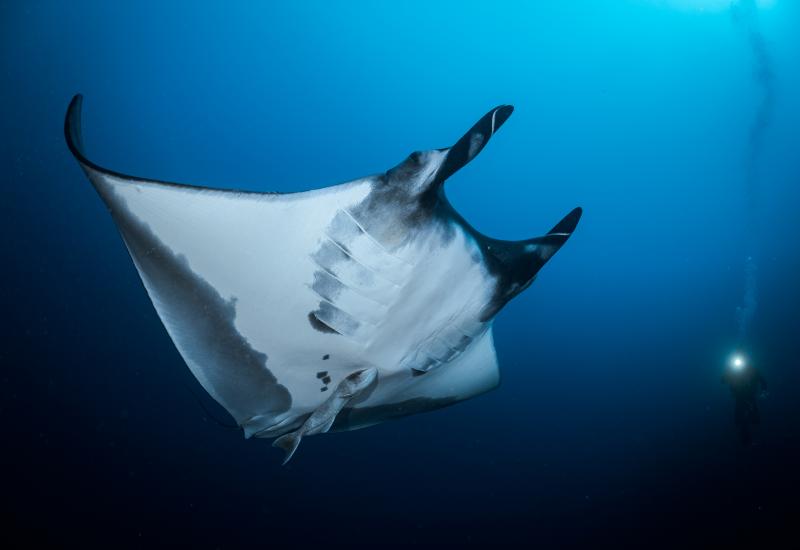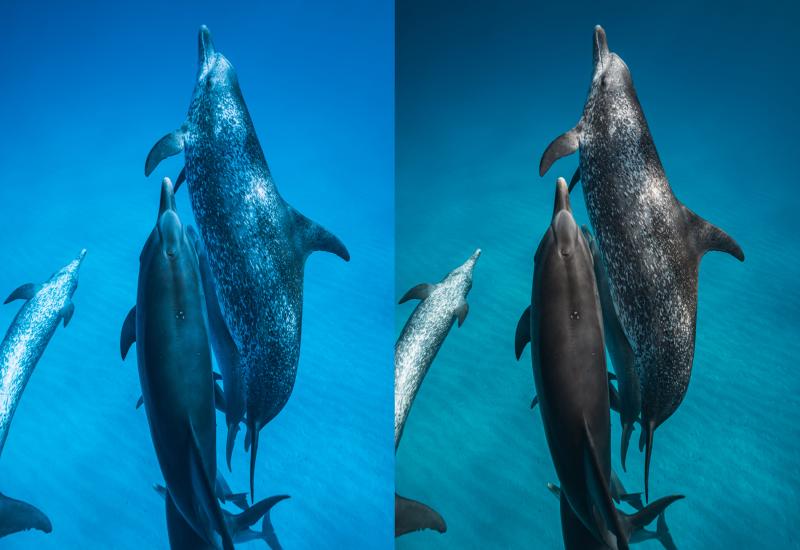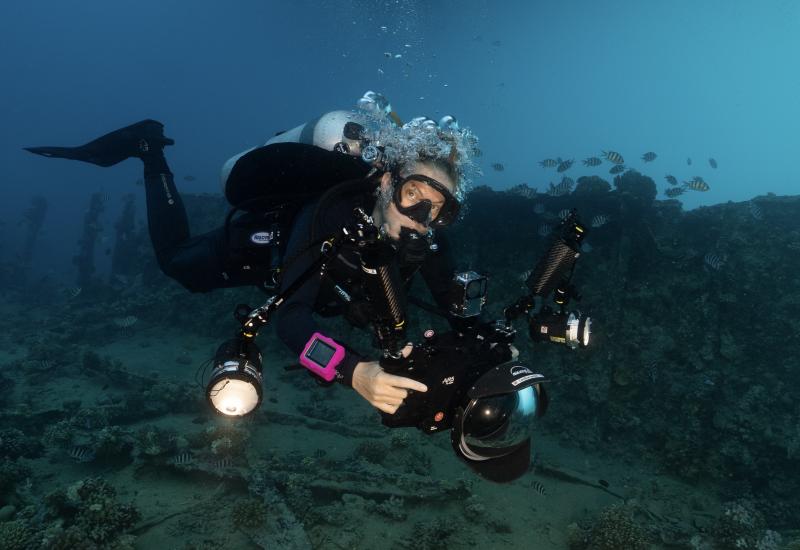What Is That Underwater Thing? Photos That Make Us Stop and Take a Second Look
Take a glimpse at some of the strange and wonderful creatures that inhabit the ocean, as seen through the eyes of some of underwater photography’s most inspirational minds.
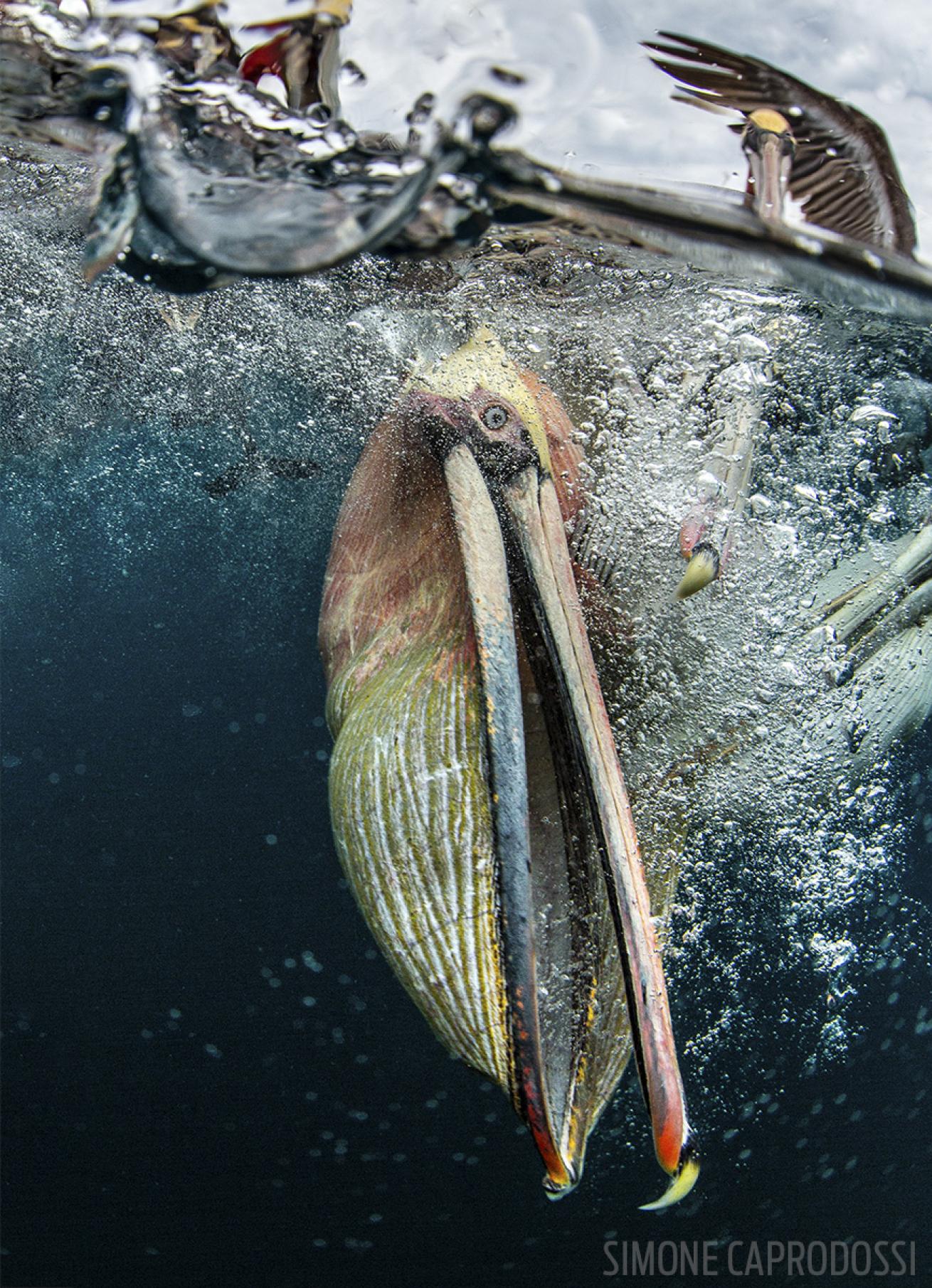
Simone CaprodossiPelicans crowd around fishing boats in Bahia Magdalena, Baja California, Mexico.
ABOUT THE SHOT:
We were in Baja to find sharks and stopped by a fishermen landing site. We saw the crowds of pelicans coming to the boats for scraps. It turned into a full afternoon — and next morning — of shooting just pelicans. I used a Canon 5D Mark III in Subal housing with a Canon 8-15mm fisheye lens at 15mm to get no distortion. There was too much silt and bubbles in the water to use a strobe, so I shot natural light. My settings were ISO 400, 1/1000 sec to freeze the movement and f/10.
- This image was an honorable mention from our 2017 Photo Contest. Check out more of our honorable mentions for more stunning photography.
GO NOW:
Encounters
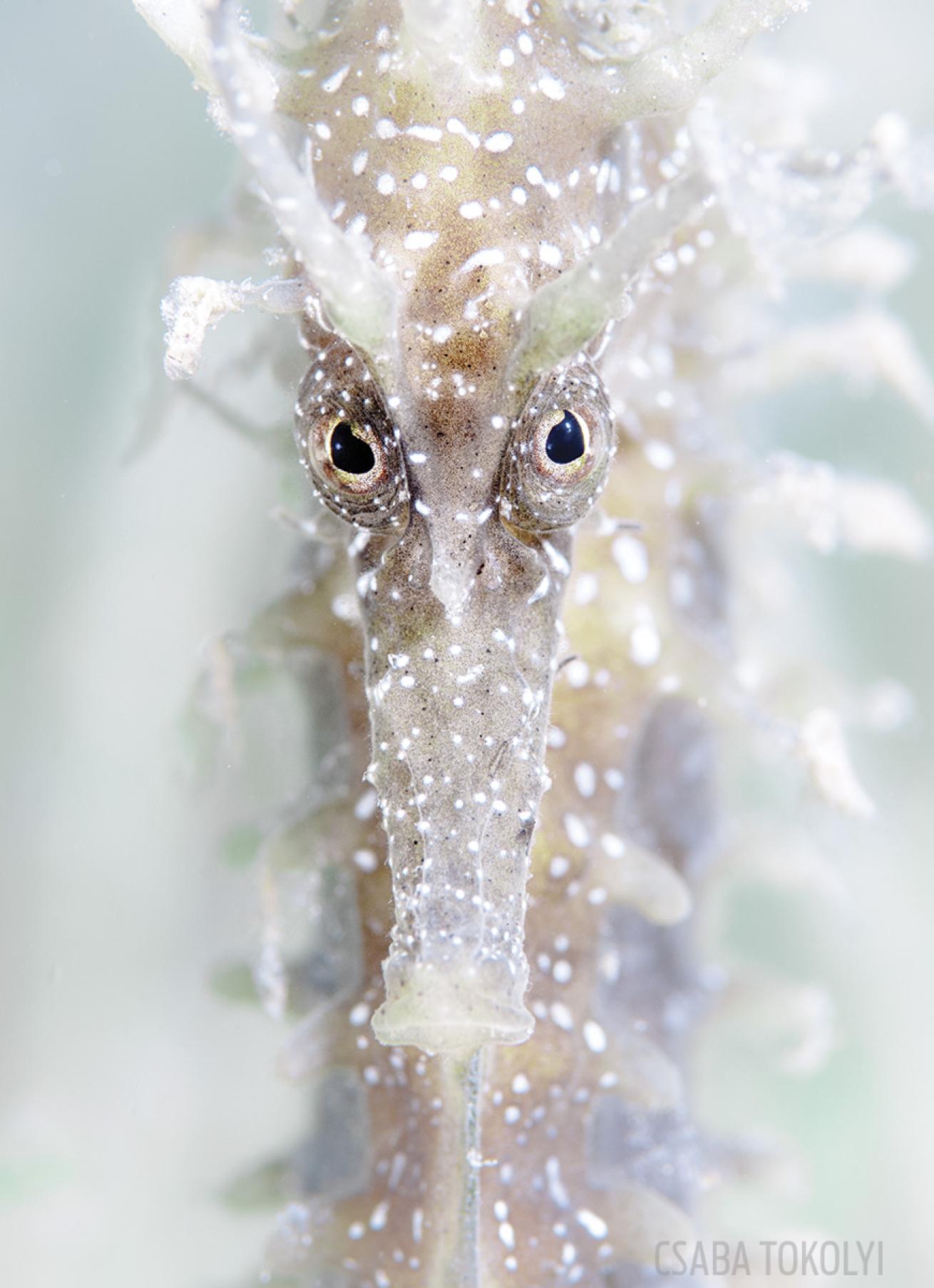
Csaba TokolyiLong-snouted seahorse in Adriatic Sea, near the island of Pag, Croatia.
ABOUT THE SHOT:
I was lucky enough to find this long-snouted seahorse (Hippocampus guttulatus) on the sand and was able to capture a high-key portrait. It took time to achieve eye-to-eye contact, but it was worth the wait. I was using a Nikon D300s in a Subal housing with a Nikon 105mm f/2.8 macro lens. Because the image was taken at a relatively shallow depth, I used a pair of Ikelite DS125 strobes to balance light. My settings were ISO 200, 1/125 sec and f/11.
GO NOW:
Blue Bay Diving Center
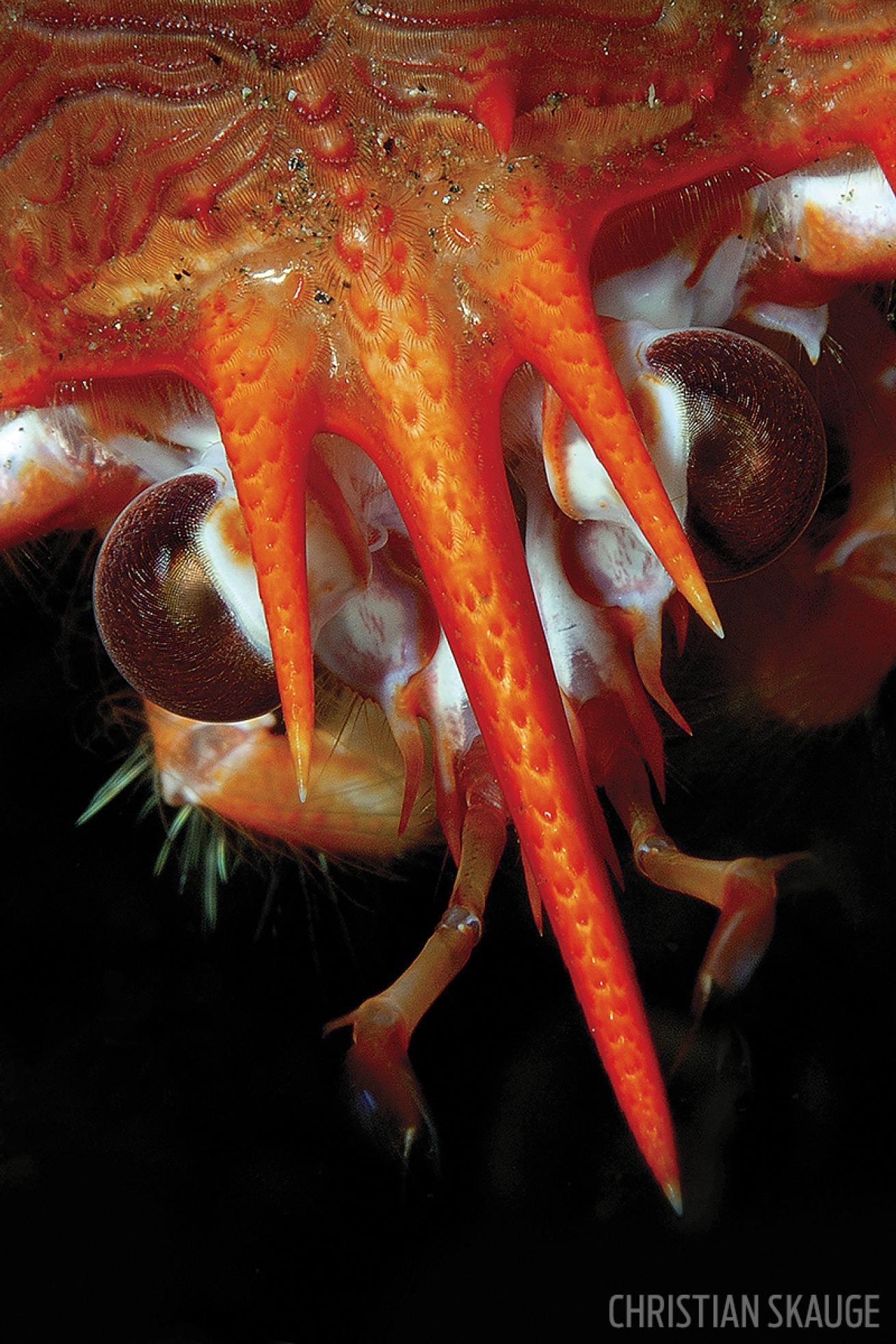
Christian SkaugeClose-up portrait of a squat lobster in Sørfjorden, south of Osterøy, close to Bergen in Norway.
ABOUT THE SHOT:
Squat lobsters are very shy. However, if you’re careful, you can get close. This lobster’s long rostrum impressed me, and I wanted to get a close-up portrait to show it properly. The shadow beneath the rock (and a high f-stop) helped create an almost black background. I used a Nikon D200 in a Nauticam housing, with a 60mm macro lens and two Inon Z-240 strobes. My camera settings were ISO 100, 1/100 sec and f/29.
GO NOW:
Gulen Dive Resort
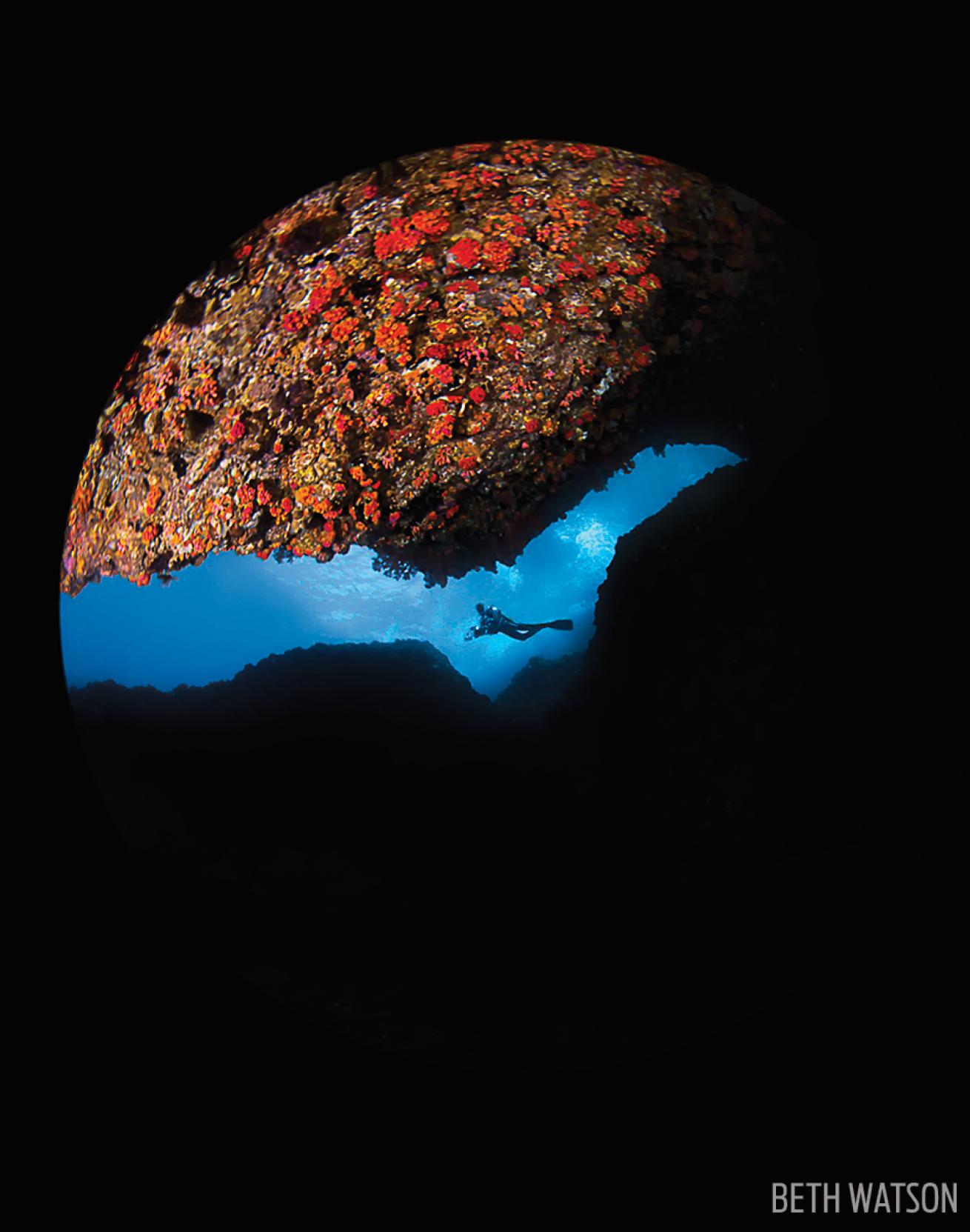
Beth WatsonCorals line this cavern-like structure on Gato Island in the Philippines.
ABOUT THE SHOT:
I was photographing two batfish during an exhilarating dive through this cavernlike structure. Fortunately, I happened to look up and saw this scuba diver above. My attention instantly switched to the diver. It took a bit of twisting and turning on my part to frame the subject. I got the shot using a Canon 5D Mark III in a Nauticam housing with a Canon 8-15 fisheye lens at 8mm and Ikelite DS 125 strobes. My settings were ISO 160, 1/160, f/10. The circular fisheye lens creates depth and provides an interesting perspective.
GO NOW:
Kokay's Maldito Dive Resort
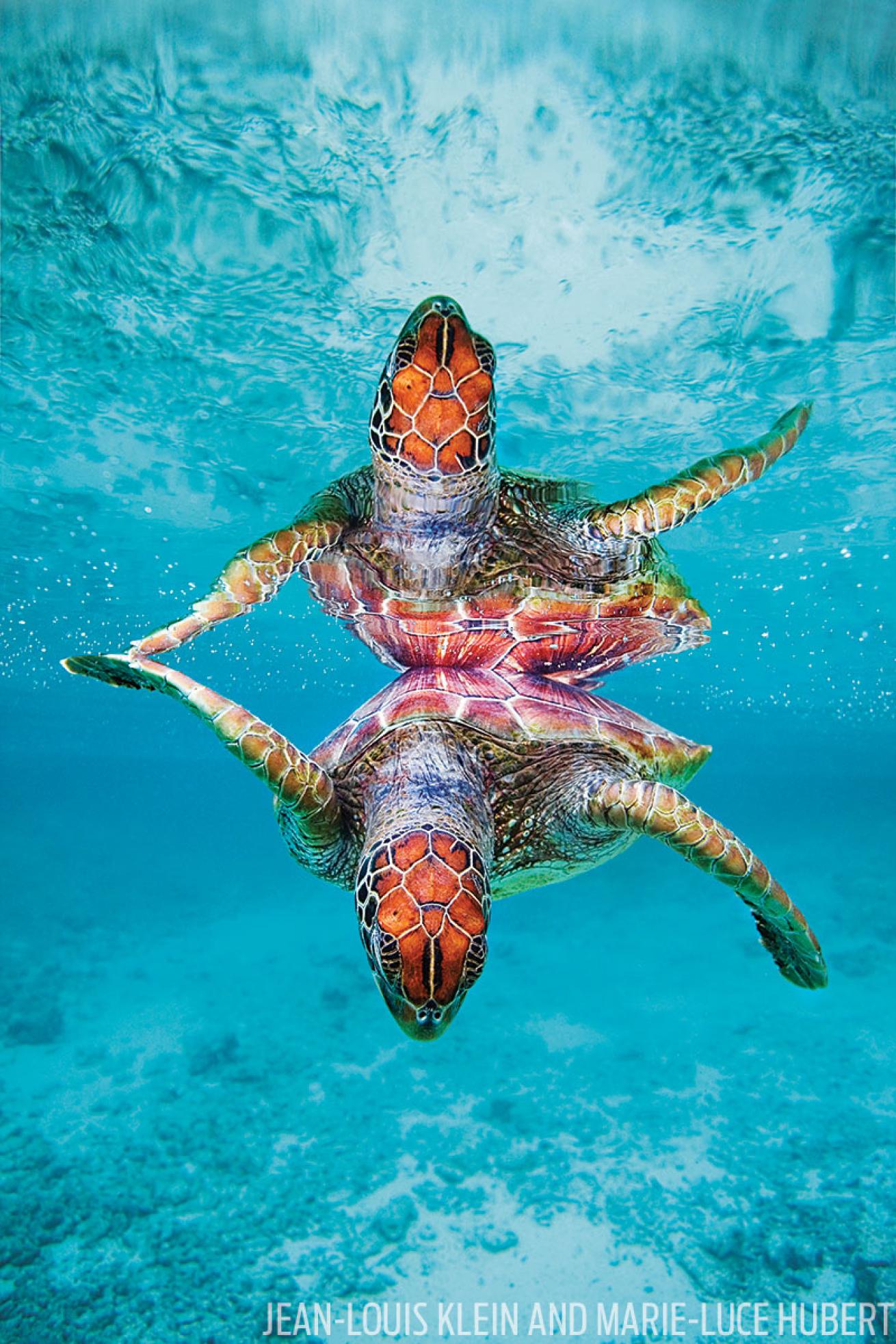
Jean-Louis Klein and Marie-Luce HubertSea turtle photographed in Raiatea Atoll, French Polynesia.
ABOUT THE SHOT:
We met this sea turtle while snorkeling on a rainy day. It was relaxed and moved at a slow pace, so we could easily follow it. It stayed at the surface after taking a breath, which let us get some great mirror shots. I used a Canon EOS-1D Mark II in a Seacam housing without strobes. Camera settings were ISO 200, 1/125 sec and f/6.3 with a focal length of 22mm.
GO NOW:
Paul Gauguin Cruises
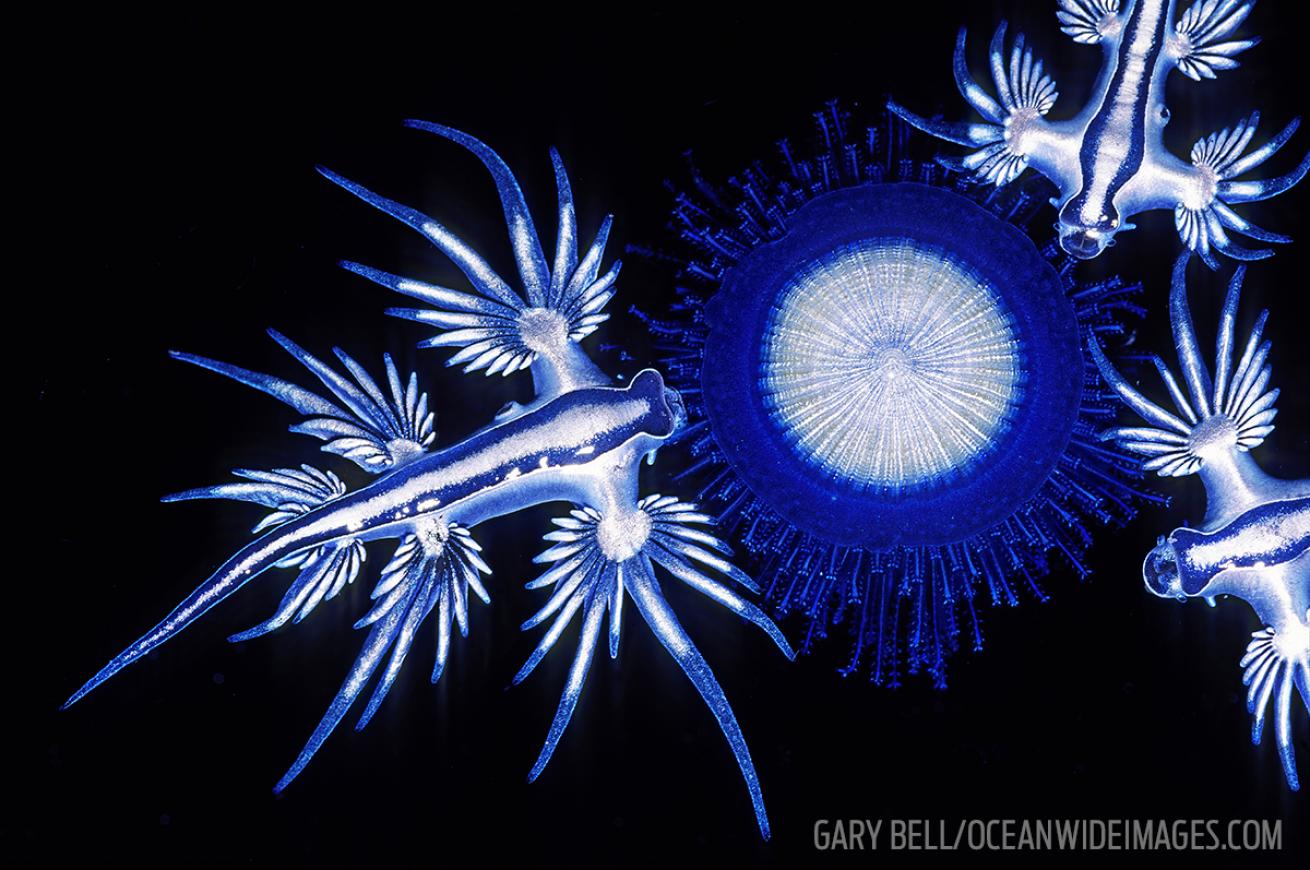
Gary BellA glaucus sea slug photographed in Coffs Harbour, New South Wales, Australia.
ABOUT THE SHOT: These glaucus sea slugs were feasting on a porpita in a rock pool. I couldn’t believe my luck — both species are pelagic and live their lives on the surface of the sea. I used a Nikon D3 set at ISO 100, 1/160 sec and f/22 with a Nikon 105mm f/2.8 lens and Nikon SB-800 Speedlight.
GO NOW:
jettydive.com.au
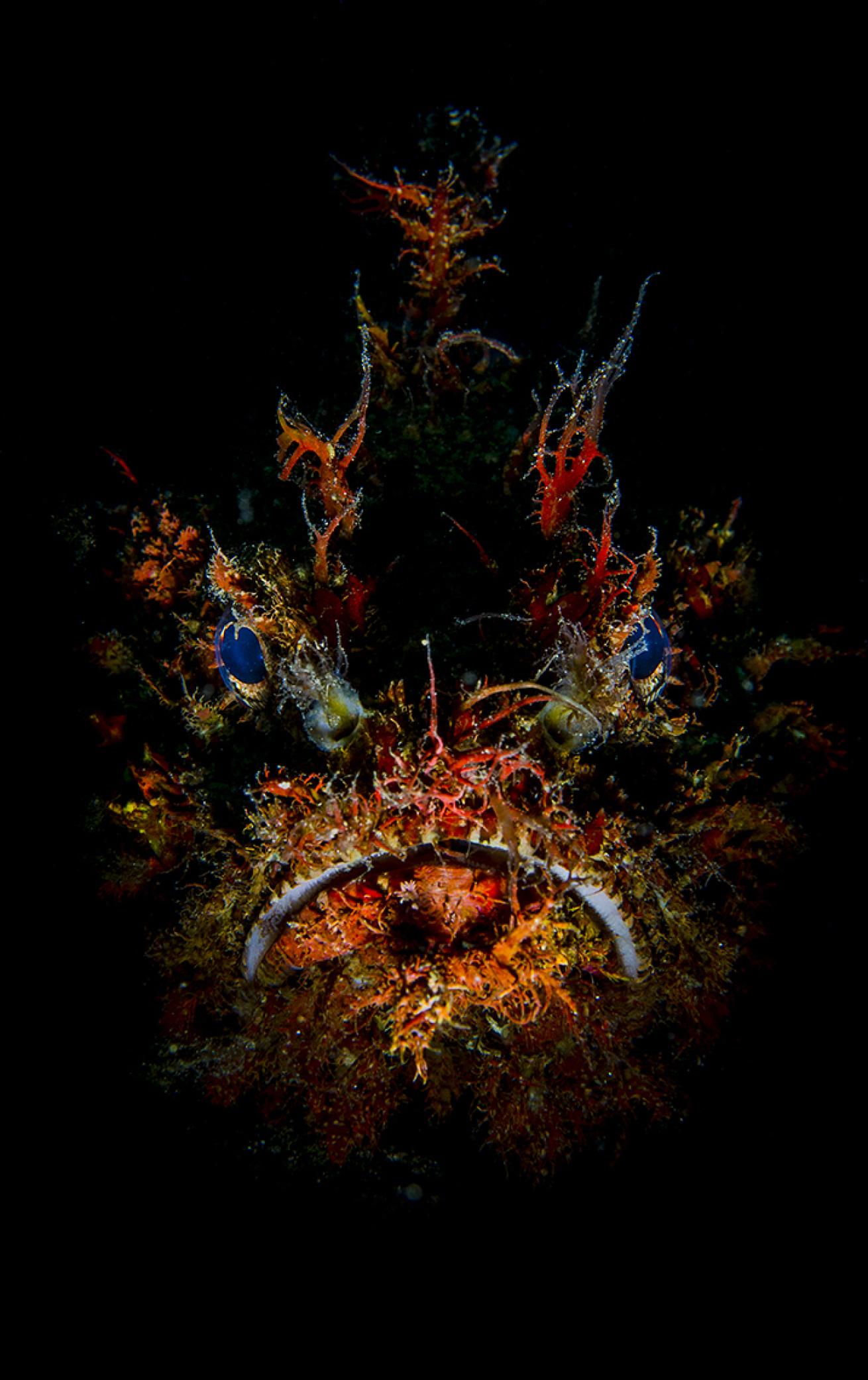
Carlos VillochA common scorpionfish photographed in Lembeh Strait, Indonesia.
ABOUT THE SHOT:
The reddish coloration of this common scorpionfish caught my attention on a night dive. The fish remained motionless, trusting in its camouflage. I took my time capturing its portrait using a Nikon D7000 and a 60mm macro lens set at ISO 400, f/18 and 1/200 sec. A single strobe equipped with a Glowdive snoot provided the narrow beam of light, but centering the beam just right took several attempts.
GO NOW:
Lembeh Resort
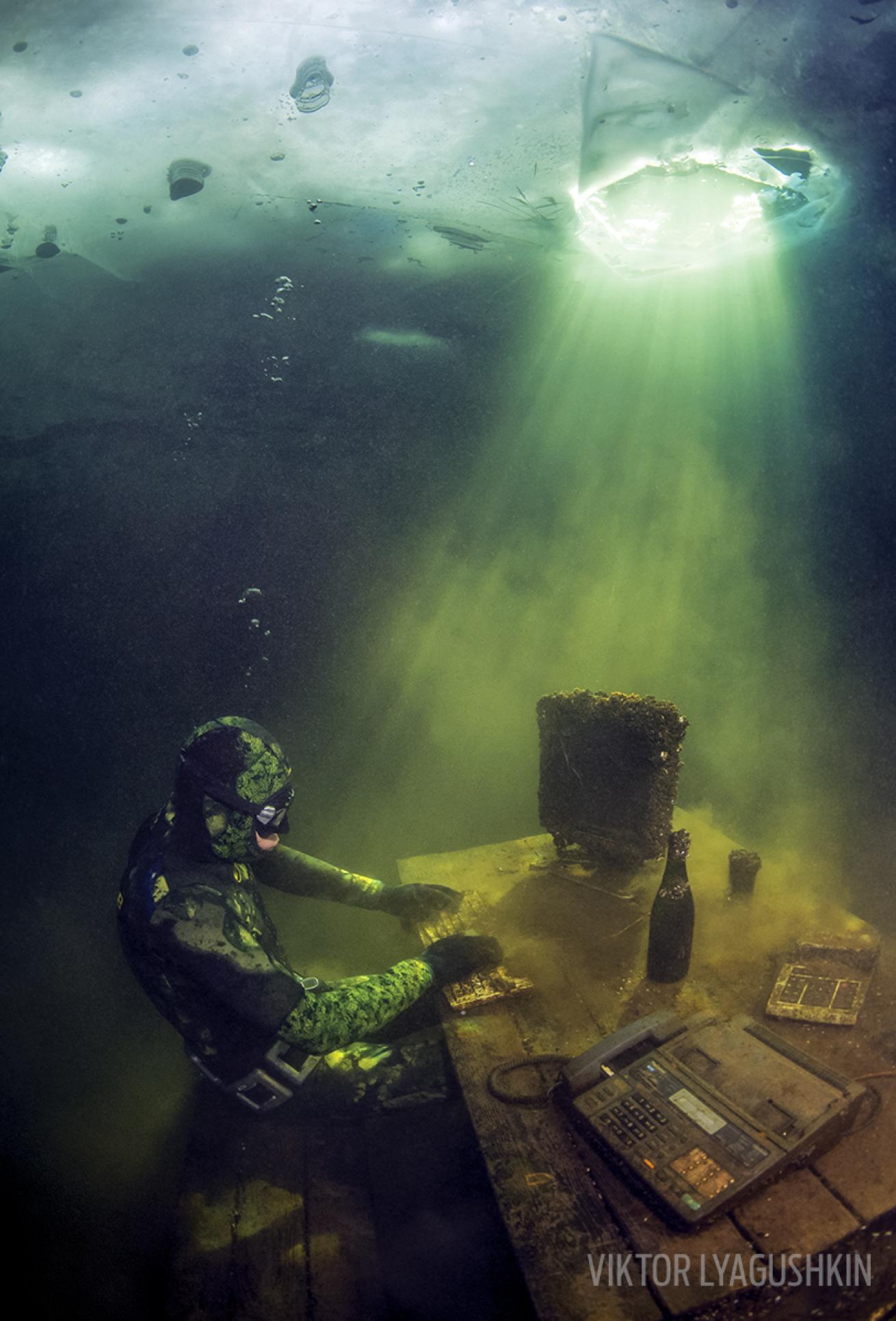
Viktor LyagushkinA freediver sits at a submerged desk in Tver Quarry, Russia.
ABOUT THE SHOT:
I used to say that any good shot is the result of long, hard work, but this one is an exception. While diving Tver Quarry on a film assignment, I noticed this freediver sitting at an office table that had been purpose-sunk in the quarry. To capture this image I used a Nikon D3S camera in a Subal housing set at f/9, 1/100 sec and ISO 800, with a Nikkor 16mm/2.8 fisheye lens and two Ikelite DS160 strobes.
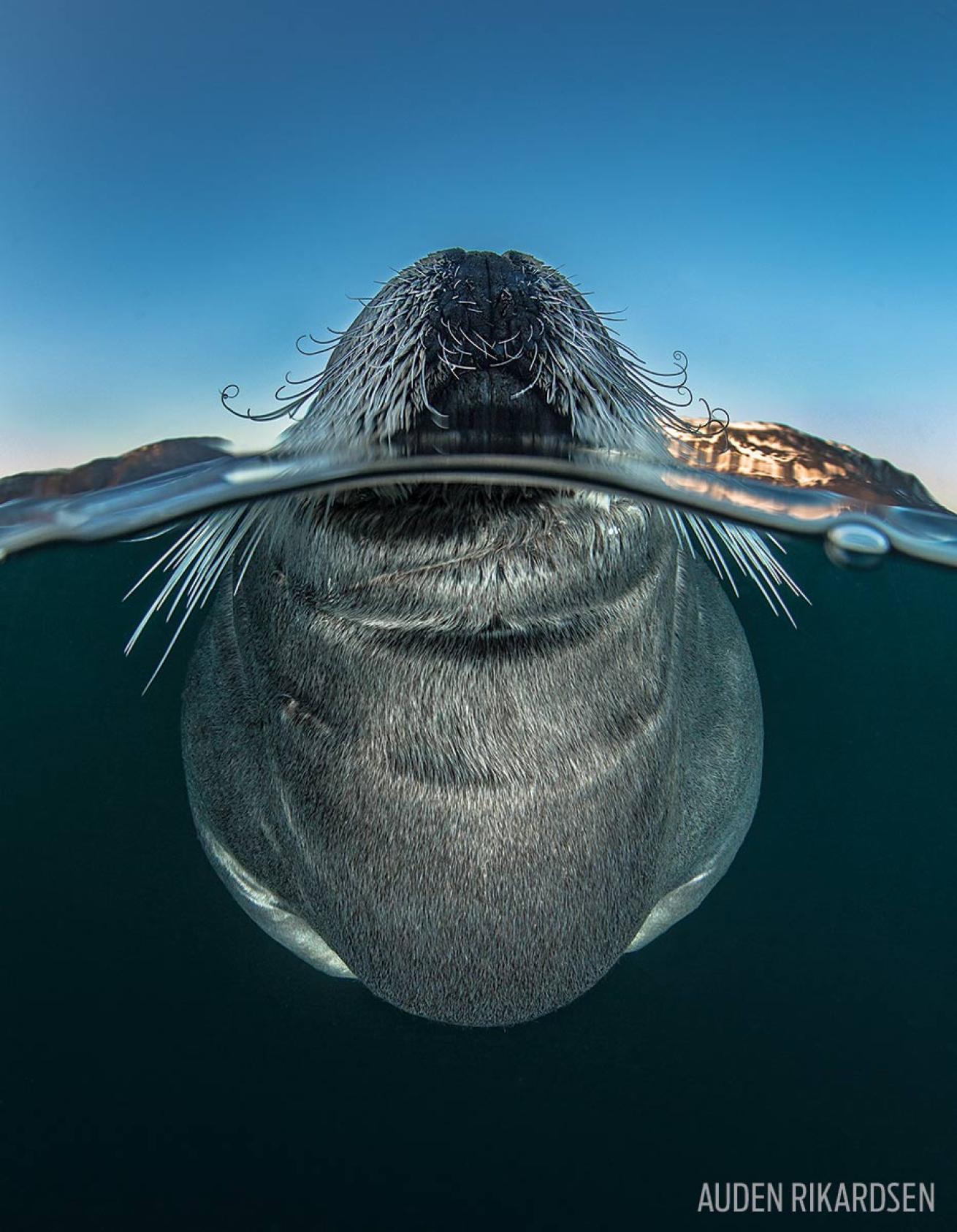
Audun RikardsenA bearded seal photographed in Tromsø, Norway.
ABOUT THIS SHOT:
After midnight, I received a call that something strange was bobbing around in a fjord near where we live. I ran down to the sea, which was lit by the midnight sun, and found a bearded seal — asleep. Having forgotten my flash arm, I held the camera in one hand and the flash in the other. Briefly, the seal opened its eyes to gaze at me, before nodding off again. I used a Canon EOS 5D Mark III with an 8-15mm f/4 lens in an AquaTech housing and a Canon Speedlite 600EX-RT flash.
Camera Settings: ISO 1000, 1/160 sec, f/10.
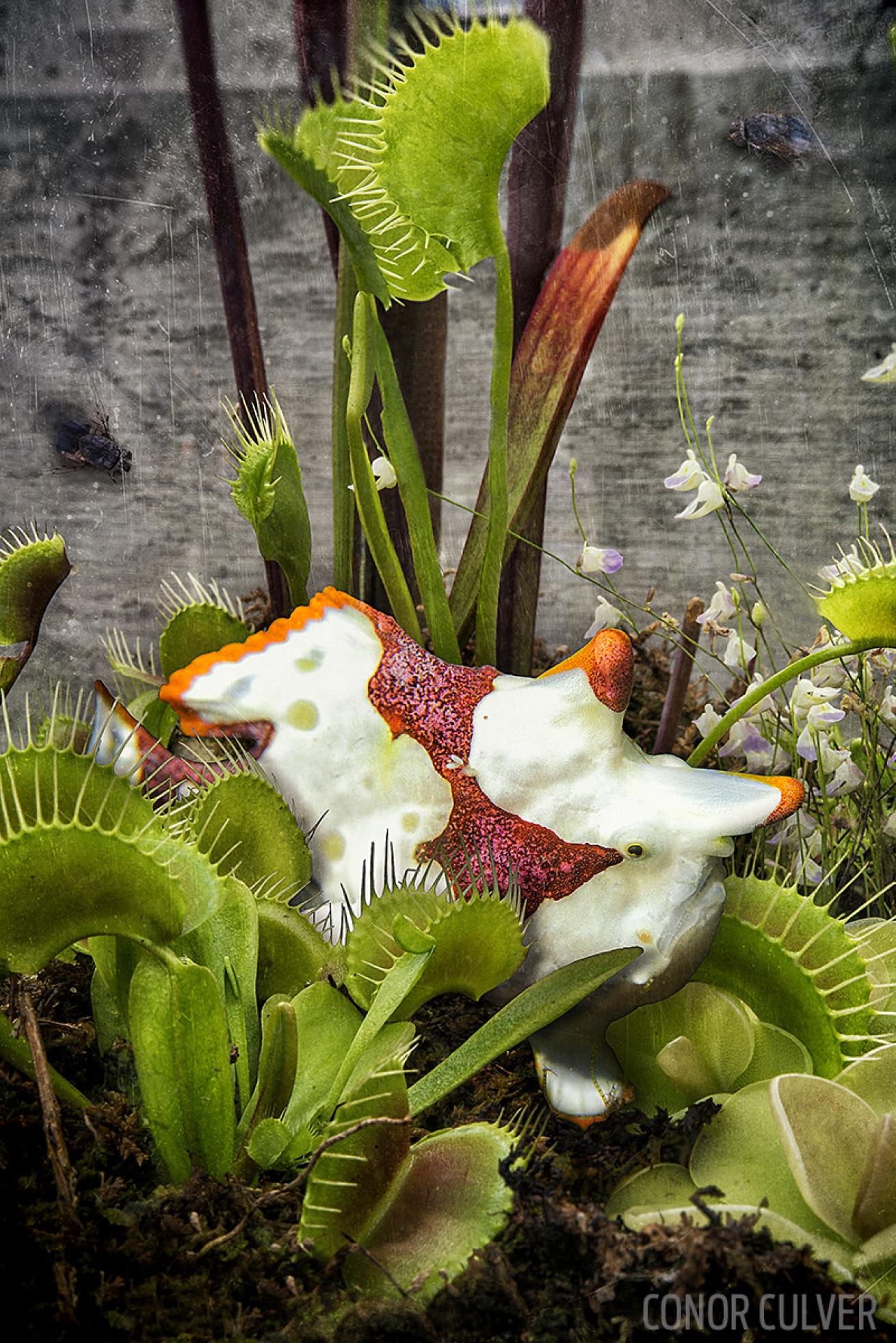
Conor CulverA frogfish is a strange sight, especially when composited into a botanical garden.
ABOUT THE SHOT:
I spied this Venus’ flytrap at the Botanical Gardens in Denver and knew that I wanted to place a frogfish hiding in the scene, with flies buzzing around. The Venus’ flytrap waits patiently for its prey, the same way a frogfish does underwater, and attacks when the prey least expects. I had a photo of a juvenile warty frogfish from Ambon, Indonesia, that would work perfectly, but I had to search around the windowsills of my house to find dead flies. I shot the frogfish with a Nikon D800E inside an Ikelite housing and two DS160 Sunstrobes. Both the frogfish and Venus’ flytrap were shot with a 60mm Nikkor macro lens.
Go Now:
conorculver.com
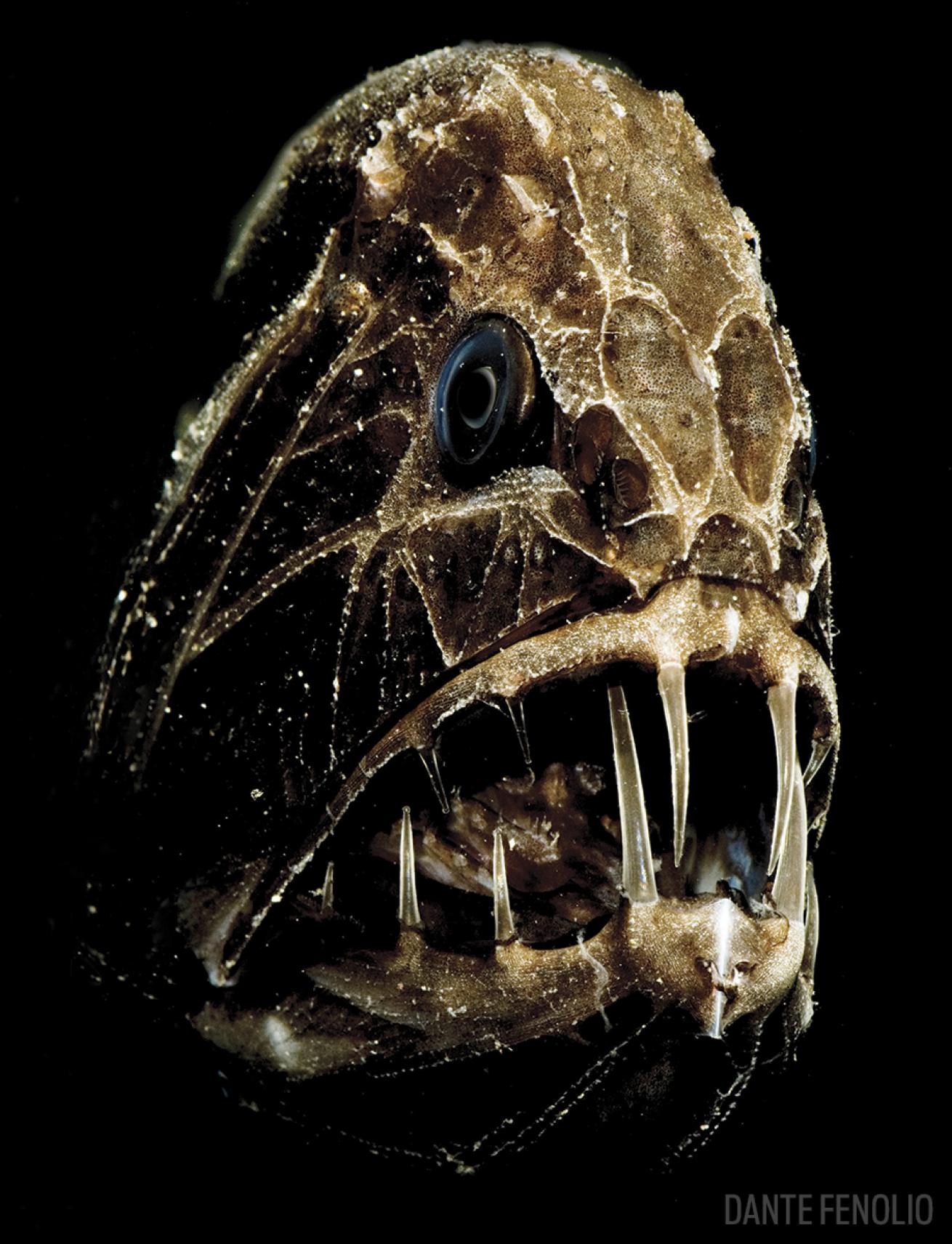
Danté FenolioA common fangtooth, a deep sea fish, came up during a research trawl.
ABOUT THE SHOT:
During a research trawl about 250 miles south of New Orleans, this common fangtooth came up from nearly 4,000 feet, alive and feisty. While I was working with the fish, it bit me — its teeth are for real. Using a Sony Alpha a77 camera equipped with a Sony 100mm macro lens and a Sony Macro Twin Flash unit, I was able to capture this image.
Camera Settings: f/25, 1/125 sec, ISO 200.
Go Now:
This species lives well beyond the depth of human diving capabilities, so it is not possible to see the fish on scuba, but you can find this and other creatures in Fenolio’s book Life in the Dark.
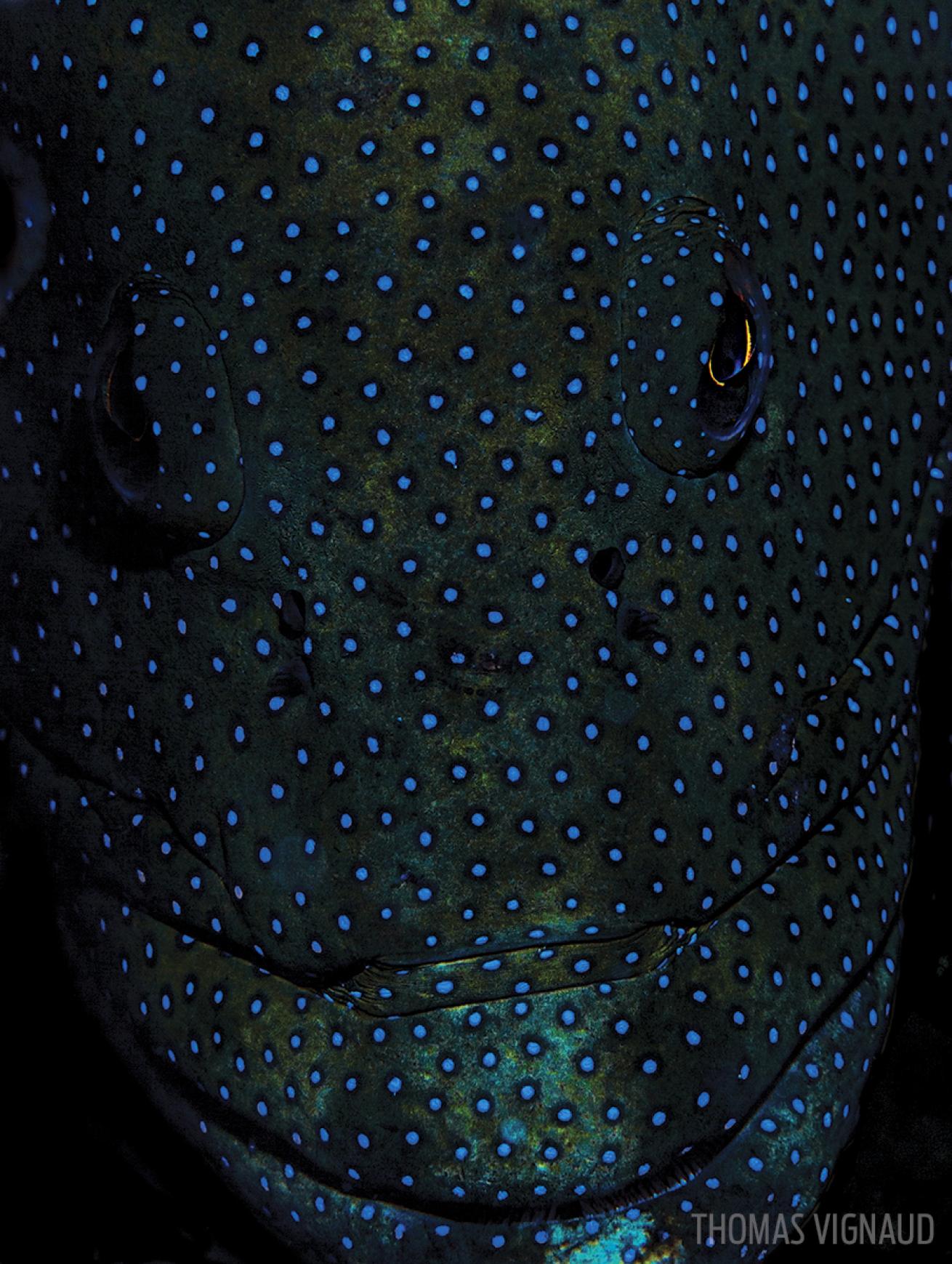
Thomas VignaudBluespotted grouper at Fakarava South Pass, French Polynesia.
ABOUT THE SHOT:
Bluespotted grouper are excellent ambush predators; I spotted this one during a night dive in French Polynesia. The grouper uses camouflage to hide from its prey, but I got close enough to clearly see the details of its face. I captured this shot using a Canon 5D Mark II, Canon 100mm macro lens and two Inon Z-240 strobes.
Camera Settings: f/16, 1/200 sec, ISO 160.
Go Now:
Tetamanu Dive Center

